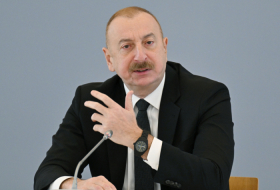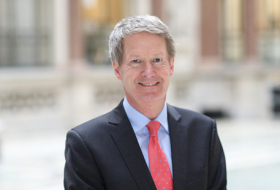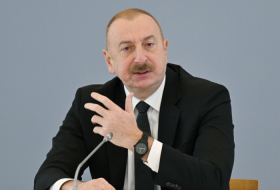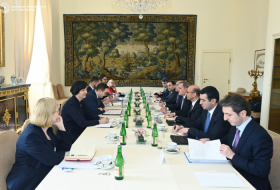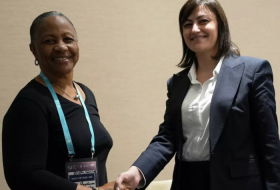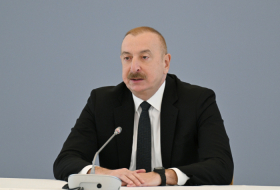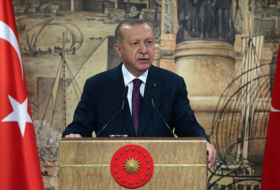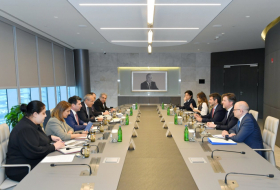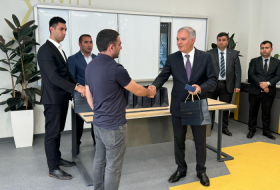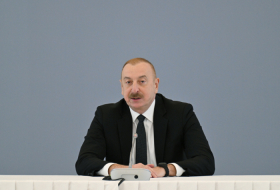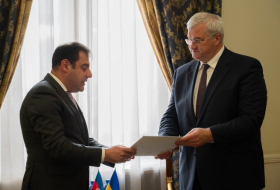The Isis woman, Nisrine Assad Ibrahim, better known by her nom de guerre, Umm Sayyaf, has helped the CIA and Kurdish intelligence officers build a detailed portrait of Baghdadi’s movements, hideouts and networks, investigators have disclosed. The claims have been confirmed by Umm Sayyaf in her first interview since being captured in a Delta Force raid in Syria four years ago that killed her husband, the then Isis oil minister.
Umm Sayyaf, 29, is a highly controversial figure who has been accused of involvement in some of the terror group’s most heinous crimes, including the enslavement of the captured US aid worker Kayla Mueller and several Yazidi women and girls, who were raped by senior Isis leaders.
She was sentenced to death by a court in Erbil, Iraq, and spoke to the Guardian, partly through a translator, at a prison in the city. She was accompanied by a Kurdish intelligence officer who made no attempt to intervene in the interview.
The human rights lawyer Amal Clooney has requested Umm Sayyaf’s transfer from Iraq to the US to face justice for her crimes. She told the UN security council in April that Umm Sayyaf “locked them [the captives] in a room, instigated their beatings and put makeup on them to ‘prepare them for rape’.”
Umm Sayyaf was the wife of Fathi Ben Awn Ben Jildi Murad al-Tunis, a close friend of Baghdadi’s and veteran of the group who held one of its most important roles at the time of his death.
In February 2016 she identified a house in Mosul in which Baghdadi was believed to have been staying. However, according to Kurdish officials, US commanders balked at calling for an airstrike on the home, only to later acknowledge the world’s most wanted man had probably been inside – his life spared by hectic activity in the skies over Iraq that night and a fear of civilian casualties in the densely packed neighbourhood.
“I told them where the house was,” said Umm Sayyaf. “I knew he’d been there because it was one of the houses that was provided for him, and one of the places he liked the most.
Her marriage, and jihadist pedigree – her family had been an integral part of the Isis leadership – had given her more proximity to Baghdadi than nearly all other Isis women. As one of the organisation’s most important wives, she had rare access to meetings and personal discussions and was present several times when Baghdadi recorded audio propaganda messages in the home she shared with her husband.
“He used to do that in our sitting room in Taji [a town in central Iraq],” she said. “My husband was the [Isis] media chief then, and Baghdadi would visit often.”
The May 205 raid that killed Tunis, known as Abu Sayyaf, and in which Umm Sayyaf was captured was a turning point in the five-year war against Isis that culminated in its battlefield defeat two months ago in its last redoubt of Baghuz, about 60 miles (95km) from where she was seized in the Omar oil field, where they had been based.
Abu Sayyaf had led forces who had commandeered Syria’s oil-producing facilities and used the proceeds to fund the terror group’s consolidation and expansion across eastern Syria and western Iraq. His death crippled the terror group’s cashflow and slowed its momentum.
Umm Sayyaf at first refused to cooperate with her captors and remained sullen and sometimes volatile in her cell in northern Iraq. But by early 2016, she had begun to reveal some of the organisation’s most sensitive secrets, none more so than how Baghdadi moved around and operated.
For many hours Umm Sayyaf pored over maps and photographs laid out on a table in front of her, alongside American men. “They were very polite and wore civilian clothes,” she said. “I showed them everything I knew.”
She soon became integral to an intelligence-gathering effort alongside US and Kurdish officers that led them to a hideout in the west of the city that had been prepared for Baghdadi by her aunt. “Her name is Saadia Ibrahim,” said Umm Sayyaf. “Two of her sons have died with Isis. And she has been with Baghdadi since the beginning. She runs the safe house network for him. She is the sister of my father.”
Speaking about Baghdadi, she said: “He visited us often in Syria. Before we moved to Omar [oil field], we lived in a house in Shadadah [a nearby town]”.
It was there that Mueller was held for a month in late 2014, along with up to nine Yazidi women and girls who were captured in August that year and enslaved by Isis. Umm Sayyaf is accused by the US government of holding the aid worker hostage, along with the Yazidis, and of being a party to the sexual abuse of Mueller at the hands of Baghdadi. Mueller is believed to have died in Raqqa in February 2015.
Umm Sayyaf denied the allegations. “Whatever he did did not involve me,” she said of Baghdadi. “Sometimes he would come for a few hours. Sometimes he would stay longer. It was just a normal house, and I provided him and my husband tea. We would also go to Raqqa with him, I remember going twice. I told the Americans where the house was. They blindfolded us every time we entered the street, but I had been there before, and I knew what it looked like.”
A senior Kurdish intelligence official said of Umm Sayyaf’s collaboration: “She gave us a really clear picture of Abu Bakr al-Baghdadi’s family structure and the people who mattered most to him. We learned about the wives of the people around him in particular, and that has been very useful for us. She identified lots of people and their responsibilities. And she gave us a sense of the real feelings of the leadership wives.”
A second senior intelligence officer said that in the Mosul case, sources on the ground in one of the areas of west Mosul that Umm Sayyaf had identified began to pick up an unusual pattern of movement. “They used to put their guards on the street, these were the internal security people, who only hang around when someone important is there. Soon, we zeroed in on the house, and we were very confident that Baghdadi was there. We told the Americans and asked them to act, and they said they had other things on. Baghdadi moved houses quite quickly and we missed him. Later, the Americans came back and said we were right.”
Of Baghdadi’s whereabouts now, Umm Sayyaf suggested he had returned to Iraq, where he always felt safer. “He never felt good in Syria, he always wanted to be in Iraq. He would only come to do something and leave. The last I heard of him, he wanted to go to Qaim and Bukamal, but that was some time ago.”
Umm Sayyaf receives a monthly visit from her family, and has access to doctors and aid workers. Despite her cooperation with authorities, she is unlikely to earn a change to her sentence. “We will not let her go,” said the second intelligence chief. “She comes from a very radical environment, and if she returned to them, she would become like them.”
More about:











